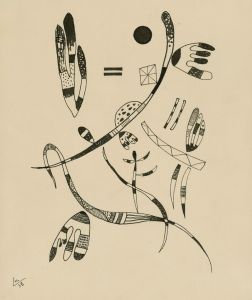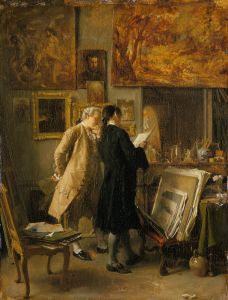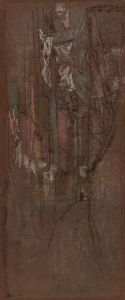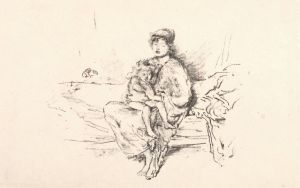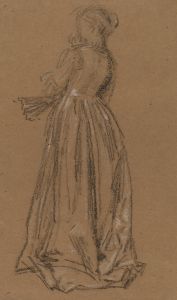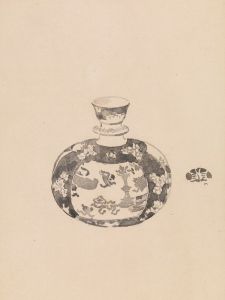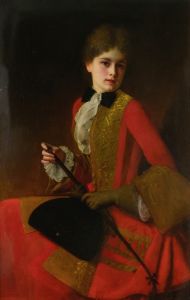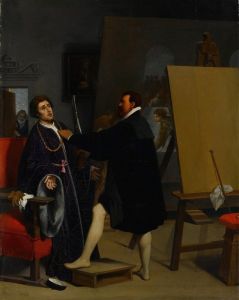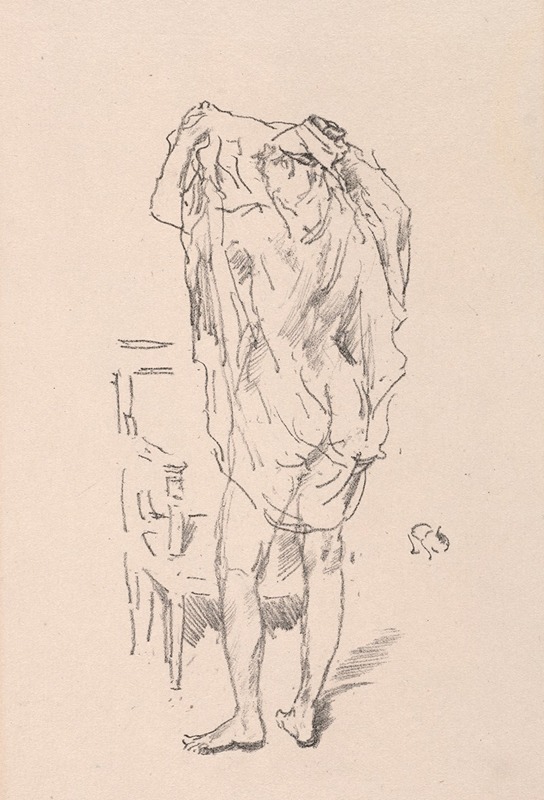
Study
A hand-painted replica of James Abbott McNeill Whistler’s masterpiece Study, meticulously crafted by professional artists to capture the true essence of the original. Each piece is created with museum-quality canvas and rare mineral pigments, carefully painted by experienced artists with delicate brushstrokes and rich, layered colors to perfectly recreate the texture of the original artwork. Unlike machine-printed reproductions, this hand-painted version brings the painting to life, infused with the artist’s emotions and skill in every stroke. Whether for personal collection or home decoration, it instantly elevates the artistic atmosphere of any space.
James Abbott McNeill Whistler, an influential American artist, is renowned for his contributions to the art world during the late 19th century. His work, "Study," is one of many pieces that exemplify his unique approach to painting and his commitment to the aesthetic movement, which emphasized beauty and visual harmony over narrative content.
Whistler was born in Lowell, Massachusetts, in 1834, but he spent much of his life in Europe, particularly in London and Paris, where he was deeply influenced by the art scenes. He was a proponent of "art for art's sake," a philosophy that suggests the intrinsic value of art lies in its beauty and form rather than in any moral or narrative message.
"Study" by Whistler is a testament to his skill in capturing subtle tones and atmospheric effects. While specific details about this particular painting are limited, it is consistent with Whistler's broader body of work, which often features subdued color palettes and a focus on mood and composition. Whistler's studies typically involve careful attention to the interplay of light and shadow, as well as a delicate balance of color and form.
Whistler's technique was heavily influenced by his admiration for Japanese art, which was gaining popularity in Europe during his lifetime. This influence is evident in his use of space and composition, often characterized by simplicity and elegance. His works frequently exhibit a harmonious blend of Western and Eastern artistic traditions, which can be seen in the way he arranges elements within his paintings to create a sense of balance and tranquility.
Throughout his career, Whistler was known for his innovative approach to portraiture and landscapes. His most famous work, "Arrangement in Grey and Black No. 1," commonly known as "Whistler's Mother," exemplifies his ability to convey emotion and character through restrained color and composition. Similarly, his nocturnes, a series of paintings depicting night scenes, showcase his mastery of capturing the ethereal qualities of light and atmosphere.
Whistler's influence extended beyond his paintings. He was also a prominent figure in the art world for his writings and his role in various legal battles, most notably the libel case against art critic John Ruskin. This case, which Whistler won, was significant in the art community as it highlighted the tensions between traditional art criticism and emerging modernist perspectives.
In summary, while specific information about the painting "Study" by James Abbott McNeill Whistler is limited, it can be understood within the context of his broader artistic achievements. Whistler's work is characterized by its emphasis on beauty, form, and the harmonious arrangement of visual elements, reflecting his belief in the aesthetic movement and his innovative contributions to the art world.







